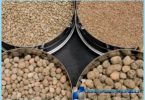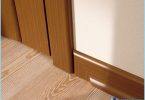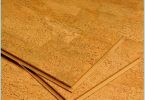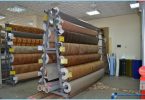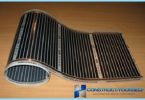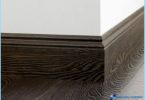The contents
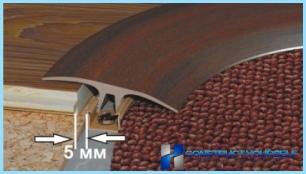
The step input is inconvenient to use, is compromised walking. In addition to the traditional versions of the product, the choice of which master can choose the required substrate thickness, there are models of lamellae with the substrate glued to the back side of the material.
Laminate structure ↑
Veneer is a composite material has a multilayer structure, the study of which will help you understand what affects the thickness of the laminate:
- protection – an acrylic or melamine resin, whereby the material is called, the thickness of this layer divides the lining into classes (33 – 31, 23 – 21)
- texture – decorative foil or paper with a pattern of sand, tile, stone, wood, non-decorative layer
- Foundation – provides rigidity, durability, made from high-density fiberboard or PVC (waterproof version)
- stabilizer – tarred or unrefined paper that provides the elasticity of the material
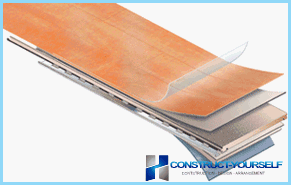
- water-resistant product that is composed of wood (the basis of PVC), laminate conventionally called because of an exact copy of the form, interlocks, produced 12 mm
- moisture proof slats, in which all the connecting surfaces (locks) that do not have a melamine protection, impregnated with wax or paraffin, and has a thickness of 10 mm
- conventional product with reinforced locks thinner than the previous versions – 9 mm
Thickness is governed by the layer of the base substrate and all other materials within the composite can not significantly change the size. In order to understand the correlation between the laminate thickness and quality, it is necessary to remember the technology of floor tiling this material, to consider the specifics:
- locks the slats are mounted in a single rug
- there is no fixing to the base
- on the perimeter remain compensation (temperature) the clearances 12 – 15 mm, decorated baseboard
Minor surface defects are smoothed out by the substrate:
- composite provides the moisture resistance of the lower level, levels significant surface defects
- cork – quality insulation, thermal insulation
- polyethylene foam – alignment of small defects, slight protection from impact sound
- polystyrene – high-quality soundproofing, improvement, alignment of large defects of flatness
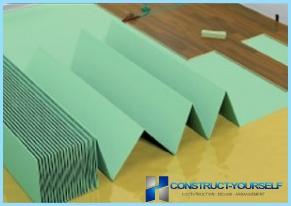
The thickness of the laminate 32 classes is normally 9 – mm. 7 However, some manufacturers hang the stabilizer of each foamed polyethylene lamellas, increasing it to 12 and 9 mm, respectively. Diagnosis, what is the thickness of the laminate is better can only be a specialist when reading the object.
Wizards get a decent pay due to the increase in the number of orders and not from the sale of the advertised product manufacturers. They have solid practice works with different materials, therefore, optimally choose veneer for the available budget repair.
Performance laminate depending on the thickness ↑
Planning a budget repair wondering what thickness of laminate to choose, the owner of the apartment, of the cottage do not forget that the locks are facing the most critical node. The thickness of the outer edges of the coating determines the wear resistance. Thus, the thickness of these two layers is the main factor in choosing specific modifications.
Wear class 33 is typically used in areas of intensive traffic. The rest of the mounts cheaper laminate 31 class. In the backrooms enough the fins of the class 23 – 21, like under furniture.

The thickness of the plywood under the laminate is selected depending on the base. On logs lay thick (18 – 15 mm) slabs, on concrete, cement screed thin sheets (9 – 8mm). In systems of adjustable floor is plywood 18 – 12 mm Maximum thickness of the substrate under the laminate is 12mm (tube), is limited to a minimum of 0.8 mm (foamed polyethylene).
Therefore, the thickness of the floor may differ significantly, which should be considered when designing interiors. Flooring is traditionally laid in the last turn, therefore, should ensure the normal opening of the door leaves.
The thickness of the laminate ↑
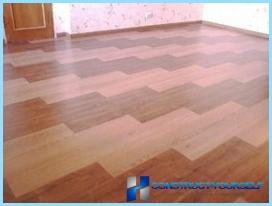
The laminate thickness of 15 mm is found in Russia is rare, since it cost twice the price of standard veneer of this type. Moreover, he belongs to a rare class of 34, have not found wide application because of the sharp increase of the budget of repair with a slight improvement of performance. The thickness of the cork underlay for laminate provides sound, heat insulation, improved acoustics. Shock force is not transmitted to the building structure, noise is absorbed, dispersed in the structure of the material.
With self-facing with laminate flooring should be preferred fat modifications – locks are stronger here, so they are harder to damage when assembling the carpet before you use it.

